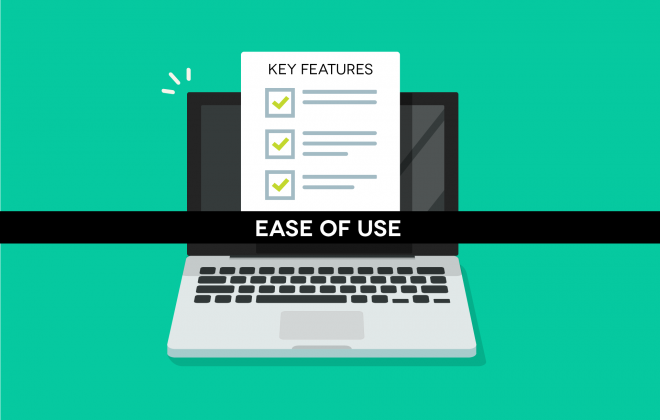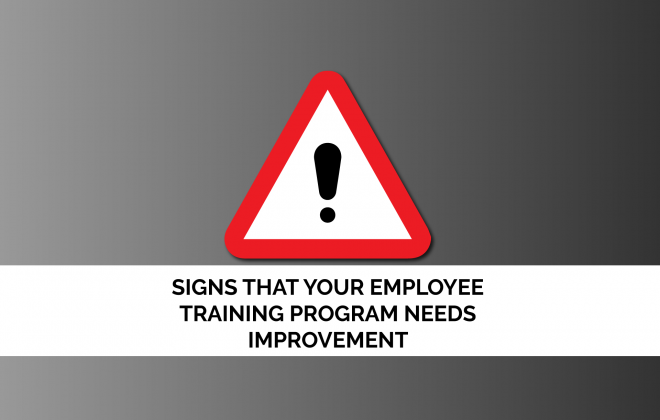
Writing Better Questions to Assess Learning
Are you a public school teacher or a college professor? Are you a safety instructor in an industrial setting? Or are you an instructional designer who writes eLearning courses for various types of businesses? Whatever the case, if you convey information to others, how can you be sure that they have a grasp of the material?
If only it were as simple as:
- “Get it?” asks the teacher.
- “Got it!” replies the student.
- “Good!” exclaims the teacher.
However, this method provides no proof of learning, no record, no grade. Whether a student is taking a class at school, performing on-the-job training, or completing an eLearning course, there must be a means to confirm the student’s understanding of the subject matter. Did they learn or not? You want the truth.
To find it, you need to develop test questions that provide a reliable assessment of student learning. You should begin by establishing student learning objectives for the topic you are covering. For example, what do you want the student to be able to do after completing the lesson or the eLearning course? Determine which types of questions would be most likely to show whether students have met these objectives.
Test questions can be categorized into two basic types—objective and subjective. Students answer objective questions by picking from several choices or providing a term or phrase. Objective question formats include matching, multiple choice, true/false, and fill in the blank. These types of questions are great for exhibiting a student’s ability to remember facts, such as matching events with the dates they occurred or filling in a name, a place, or other specific information.
Subjective questions are essay questions, which can require either a short or long response. By logically organizing their thoughts, students can express original ideas and show how broad their understanding of the course material really is.
But before you can evaluate student learning outcomes, you must first write effective test questions. To get started, consider these tips:
- Multiple Choice questions consist of a stem (partial statement) or a question followed by several answer choices from which the student chooses one. All That Apply questions are handled in the same manner, but more than one answer choice is always correct.
- Keep answer choices about the same length.
- Avoid repeating an article (e.g., a, an, the) at the beginning of each answer choice if it can instead be included at the end of the stem.
- Structure each set of answer choices so that they are grammatically parallel (i.e., each answer begins with a noun, verb, or preposition).
- Make each answer choice plausible and not ridiculous.
- Use language that is clear and concise in the question or stem.
- True/False questions include a full statement, followed by two choices—True and False.
- Word each statement so that it is completely true or false without exception.
- Deal with only one idea in each statement.
- Avoid extreme qualifiers, such as “all,” “frequently,” and “usually.”
- Use vocabulary that is familiar to students.
- Prevent confusion by avoiding negative statements.
- Fill-in-the-Blank questions are statements with a word or words deleted and replaced with a “blank.” Students can write the answer in the blank based on what they know, or they can select a word or phrase from a word bank, depending on how you want to format this type of question. This could also be presented as a multiple choice question where the correct answer choice “fills in the blank.”
- Remove only essential words or terms from each statement, but don’t use so many blanks in a statement that it loses its intended meaning.
- Avoid using clues, such as a partial term that makes it obvious what the correct answer is. Try requiring the student to write the entire term instead of only one word of the term.
- Include “a(n)” instead of “a” or “an” to keep from giving a hint as to whether the correct response begins with a vowel or a consonant.
- Position the blank closer to the end of the statement instead of the beginning.
- Matching questions are set up in two columns with information, such as names, events, or a sentence stem, in the left column; and in the right column, terms, dates, or short answers are listed, each of which is somehow connected to one of the items in the left column.
- Use straightforward instructions. Define both columns in your instructions, such as “Match the events with the dates they occurred.” or “Match the key terms with their definitions.” Also, let students know if some of the responses can be used more than once or not at all.
- Keep the text in both columns as brief as possible.
- Group similar terms. For example, don’t mix a person, a thing, a date, a number, and a concept in the same column. Instead, make a list of names or a list of dates.
- Essay questions are comprised of statements that tell the students what they will need to write about in their responses.
- Make your expectations clear in the instructions.
- Indicate specific points that should be covered in student essays.
- Write questions that can evaluate higher levels of thinking. Use verbs that can guide students toward the type of thinking you want them to use, such as “analyze,” “compare,” or “contrast.”
Testing not only motivates students to learn the material, but it helps the instructor see how well students are achieving course objectives. To dig deeper into creating tests that can best measure student learning, refer to the following resources:
Related Posts
Latest posts
Categories
- Advantages of an LMS (2)
- Community Involvement (1)
- Compliance Training (7)
- Conferences (1)
- Corporate eLearning (10)
- Customer Service (2)
- DEI (1)
- Diversity (1)
- eLearning Design & Development (10)
- eLearning Trends (12)
- Employee Engagement (7)
- Equity (1)
- ExxTend Learning Features & Updates (2)
- Fun (3)
- Inclusion (1)
- Instructional Design (3)
- Instructor-Led Training (2)
- Learning & Development (20)
- Learning Content (9)
- Learning Management System (12)
- LMS Best Practices (6)
- LMS Implementation (2)
- LMS Software (14)
- Motivation (7)
- News (1)
- Online Training (3)
- Photo (1)
- SaaS (1)
- Software as a Service (7)
- Training & Development (14)
- Uncategorized (1)





